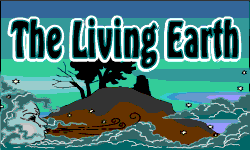The Living Earth
Created | Updated Nov 13, 2002

In another reminder that the earth is active, no matter where you live, the people of Manchester had a rude awakening during the middle of October, when a series of small earthquakes hit the city. People in high buildings found the tremors quite distinctive – 'I thought it was a car crashing outside', said one office worker. The quakes follow a more significant tremor in September close to the town of Dudley in the Midlands area.
In the UK, nobody was injured or killed. This fortune did not visit the schoolchildren of San Giuliano di Puglia, where 26 children were killed outright when the ceiling of their school collapsed. An aftershock, equally as big as the original earthquake, caused further
despair in an already shell-shocked community. The tragedy is that the earthquakes were relatively moderate, clocking in at 5.4 on the Richter Scale. A well-built building would have been easily able to withstand the quake.
The big volcano story in October, also in Italy, was the re-awakening of Mount Etna in Sicily. Etna erupts quite often, sending huge lava flows down its slope, and pouring ash over the neighbouring cities and towns. A spectacular photograph was taken from space showing
the Etna dust cloud as it wafted across the Mediterranean towards the North African coastline.
The isle of Monserrat, already devastated by over a decade of volcanic explosions, awoke to the news that it’s not over yet. A lava dome has been growing daily in the Soufriére hills, presaging a massive explosion in the near future. A lava dome acts like a plug, preventing volcanic gasses and magma from escaping. Once it is breached, the effect is a gigantic explosion. Over the past 10 years the population of the country has declined enormously, as the volcano has destroyed crops and buried the island’s capital, Plymouth.
Europe was battered by a significant storm during late October, producing a trail of destruction from Ireland to Austria.
More evidence confirming the global warming theory came to light in October. Kilimanjaro, one of the highest mountains in Africa, is expected to be ice-free within 20 years; and the lake level of a central Asian lake (Issyk-Kul) has increased dramatically, also an indication of an increase in global temperatures.
From a science perspective, Earth's 'little brother' was discovered – an asteroid 100 metres across, that shares the same orbit as our own planet. Asteroid 2002 AA29 has a weird orbit, but never comes closer than 3.6 million miles from us however, so it poses no threat.
To find out what is happening on a regular basis, subscribe to the News Update feature of the Living Earth Page.
